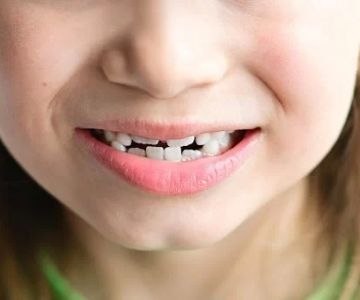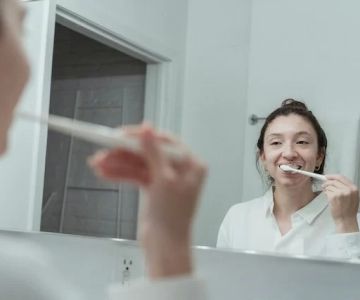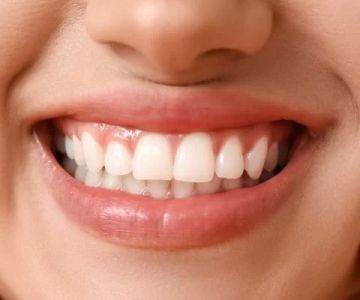
- understanding-tooth-discoloration
- why-home-teeth-whitening-is-popular
- safe-methods-for-whitening-teeth-at-home
- home-remedies-worth-considering
- mistakes-to-avoid-while-whitening
- real-stories-of-diy-teeth-whitening
- when-to-consult-a-dentist
1. Understanding Tooth Discoloration
1.1 The Science Behind Why Teeth Get Stained
Tooth discoloration is caused by a combination of external and internal factors. Common culprits include coffee, red wine, tea, tobacco, and poor oral hygiene. Over time, these elements stain the enamel—the outermost layer of your teeth—making them appear yellow or dull. Aging also plays a role as the enamel wears down, revealing the yellowish dentin beneath.
1.2 Surface vs. Deep Stains
Surface stains are easier to treat at home using non-abrasive whitening products, while deeper stains, such as those caused by certain medications or trauma, may require professional dental care. Recognizing the type of stain is the first step in choosing a safe and effective whitening method.
2. Why Home Teeth Whitening Is Popular
2.1 Convenience and Cost-Effectiveness
With busy schedules and rising healthcare costs in the U.S., many people look for ways to whiten their teeth without a trip to the dentist. Over-the-counter whitening strips, natural remedies, and LED light kits offer flexibility and affordability—though not all of them are equally safe or effective.
2.2 Social Media and Aesthetics Pressure
The rise of selfies and video calls has made white teeth more desirable than ever. From influencers to everyday users, the pursuit of a brighter smile is visible everywhere. Unfortunately, this sometimes leads to risky DIY methods trending online. Choosing the right approach ensures both aesthetics and safety.
3. Safe Methods for Whitening Teeth at Home
3.1 Whitening Toothpaste with ADA Seal
Start with a whitening toothpaste that’s approved by the American Dental Association (ADA). These toothpastes contain gentle abrasives and mild peroxide compounds that help lift surface stains without harming enamel. Use them consistently for 2–4 weeks for noticeable results.
3.2 At-Home Whitening Strips
Whitening strips containing hydrogen peroxide are widely available and can produce visible results in a few days. For safety, avoid strips with high peroxide concentrations or those lacking clear usage instructions. Always follow package directions to prevent tooth sensitivity or gum irritation.
3.3 LED Whitening Kits
Some at-home kits come with LED lights that enhance the action of whitening gels. While results vary, choose products that are FDA-cleared and well-reviewed. Never exceed recommended usage time, and avoid overlapping treatments.
Need help choosing a trustworthy kit? Visit Dentistry Toothtruth for expert recommendations on dentist-approved whitening solutions tailored for at-home use.
4. Home Remedies Worth Considering
4.1 Baking Soda and Hydrogen Peroxide
A paste made from baking soda and hydrogen peroxide is a popular home remedy. While baking soda removes surface stains, peroxide helps bleach the teeth mildly. Use only a small amount and avoid daily use—2–3 times per week is enough.
4.2 Oil Pulling with Coconut Oil
Though not a bleaching agent, oil pulling with coconut oil may help remove bacteria and reduce plaque, giving teeth a cleaner look. Swish 1 tablespoon of oil for 10–15 minutes daily before brushing.
4.3 Apple Cider Vinegar (Use With Caution)
Apple cider vinegar is acidic and can erode enamel if overused. If you choose to try it, dilute with water and use it sparingly—once a week at most. Follow with a rinse of plain water to protect your enamel.
5. Mistakes to Avoid While Whitening
5.1 Overusing Whitening Products
Whitening your teeth too frequently can damage enamel and increase sensitivity. Stick to a regimen and don’t double up on products (e.g., strips and LED kits at the same time).
5.2 Using Abrasive Materials
Avoid brushing with activated charcoal or coarse baking soda directly. These abrasive materials can scratch enamel, leaving teeth weaker and more prone to staining in the future.
5.3 Skipping Oral Hygiene Fundamentals
No whitening method will work if your oral hygiene is poor. Regular brushing, flossing, and dental visits lay the foundation for any whitening success.
6. Real Stories of DIY Teeth Whitening
6.1 Amanda’s Natural Approach
Amanda, a 29-year-old from California, wanted whiter teeth without the dentist bill. She used a mix of whitening toothpaste and baking soda once a week. After six weeks, she saw a noticeable improvement without sensitivity. “Consistency and patience were key,” she shared.
6.2 Jake’s LED Kit Experience
Jake from Austin tried a trendy LED whitening kit he saw on TikTok. He followed the instructions strictly, using it every other day for two weeks. While his teeth brightened significantly, he developed slight gum irritation. A local dentist confirmed he overused it. Jake now balances whitening with regular dental care and visits Dentistry Toothtruth for safer options.
7. When to Consult a Dentist
7.1 If You Have Dental Sensitivity or Gum Disease
If you experience pain, gum bleeding, or sensitivity while whitening at home, stop immediately and consult a dentist. These could be signs of enamel erosion, gum recession, or underlying oral issues worsened by whitening agents.
7.2 Before Whitening Crowns or Veneers
Most whitening methods only affect natural teeth. Dental restorations like crowns, veneers, or bonding won’t whiten, which can lead to uneven coloring. Your dentist can help match the shade or suggest appropriate cosmetic options.
7.3 Getting Personalized Advice
Everyone’s teeth respond differently to whitening. A dentist can guide you on products that suit your enamel type, lifestyle, and goals. Check with Dentistry Toothtruth to get tailored advice and reliable product suggestions that prioritize both aesthetics and health.







 Spring View Dental Care4.0 (1298 review)
Spring View Dental Care4.0 (1298 review) Lightfoot Center for Laser Periodontics5.0 (69 review)
Lightfoot Center for Laser Periodontics5.0 (69 review) Aspen Dental - State College, PA3.0 (637 review)
Aspen Dental - State College, PA3.0 (637 review) Lakewood Dental Care4.0 (12 review)
Lakewood Dental Care4.0 (12 review) Kiddsmiles Pediatric Dentistry - Manhasset4.0 (234 review)
Kiddsmiles Pediatric Dentistry - Manhasset4.0 (234 review) Christopher Kragor, DMD5.0 (21 review)
Christopher Kragor, DMD5.0 (21 review) The Importance of Oral Health Education During Pregnancy for a Healthy Pregnancy
The Importance of Oral Health Education During Pregnancy for a Healthy Pregnancy Best Tips for Brushing Your Teeth Properly for Healthy Gums: Essential Techniques for Oral Health
Best Tips for Brushing Your Teeth Properly for Healthy Gums: Essential Techniques for Oral Health Why Skipping Dental Checkups Can Lead to Bigger Oral Health Problems
Why Skipping Dental Checkups Can Lead to Bigger Oral Health Problems Advantages of Porcelain Dental Restorations
Advantages of Porcelain Dental Restorations How Can Diabetes Cause Tooth and Gum Problems? Preventing and Managing Oral Health Issues
How Can Diabetes Cause Tooth and Gum Problems? Preventing and Managing Oral Health Issues Healthy Habits for Promoting Good Oral Health and Hygiene: Tips for a Healthy Smile
Healthy Habits for Promoting Good Oral Health and Hygiene: Tips for a Healthy Smile